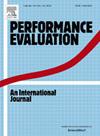优化空间调制MIMO物联网系统与全双工/半双工无人机和增强的发射天线选择
IF 0.8
4区 计算机科学
Q4 COMPUTER SCIENCE, HARDWARE & ARCHITECTURE
引用次数: 0
摘要
多输入多输出(MIMO)系统在提高通信网络的效率和可靠性方面发挥着至关重要的作用,特别是在物联网(IoT)应用中。本文介绍了一种安装在无人机上的全双工(FD)和半双工(HD)继电器来增强MIMO系统的新方法。结合空间调制(SM)和发射天线选择(TAS)技术旨在优化系统性能,同时降低计算复杂性,以满足物联网要求。本文在数学上计算了在实际的Nakagami-m通道上使用SM和FD/HD-UAV的拟议MIMO-IoT-UAV系统的中断概率(OPs)和系统吞吐量(STs),包括有和没有TAS。数值实例强调了在MIMO-IoT-UAV系统中采用FD/HD-UAV和TAS的优势。具体而言,有TAS的OPs显著低于无TAS的OPs,而有TAS的STs显著高于无TAS的STs。此外,配备FD-UAV的TAS比HD-UAV具有更大的优势,特别是在防止与残余自干扰(RSI)相关的误差方面。为了在使用FD-UAV的MIMO-IoT-UAV系统中减轻这种误差层,一种有效的策略包括增加发射/接收天线的数量。FD和HD模式之间的选择取决于传输功率、数据速率和RSI等参数。取决于这些因素,FD-UAV的性能可能比HD-UAV表现出更低或更高的错误率。因此,优化选择FD或HD模式,并结合TAS,对于提高MIMO-IoT-UAV系统性能至关重要。该优化过程应考虑RSI水平、发射/接收天线数量、数据速率要求和无人机位置等参数,以确保在不同场景下高效可靠的通信。本文章由计算机程序翻译,如有差异,请以英文原文为准。
Optimizing spatial modulation MIMO IoT systems with full-duplex/half-duplex UAVs and enhanced transmit antenna selection
Multiple-input multiple-output (MIMO) systems play a crucial role in elevating the efficiency and reliability of communication networks, especially within Internet of Things (IoT) applications. This article introduces a novel approach involving full-duplex (FD) and half-duplex (HD) relays mounted on unmanned aerial vehicles (UAVs) to enhance MIMO systems. Incorporating spatial modulation (SM) and transmit antenna selection (TAS) techniques aims to optimize system performance while reducing computational complexity to meet IoT requirements. The article mathematically formulates outage probabilities (OPs) and system throughputs (STs) for the proposed MIMO-IoT-UAV systems utilizing SM with FD/HD-UAV, both with and without TAS, over practical Nakagami- channels. Numerical illustrations underscore the advantages of employing FD/HD-UAV and TAS in MIMO-IoT-UAV systems. Specifically, OPs with TAS are significantly lower, while STs with TAS are notably higher than their counterparts without TAS. Additionally, TAS with FD-UAV yields greater benefits than HD-UAV, particularly in preventing the error floor associated with residual self-interference (RSI). To mitigate this error floor in MIMO-IoT-UAV systems using FD-UAV, an effective strategy involves increasing the number of transmit/receive antennas. The choice between FD and HD modes hinges on parameters such as transmit power, data rate, and RSI. Depending on these factors, FD-UAV performance may exhibit lower or higher error rates than HD-UAV. Hence, the optimal selection of FD or HD mode, combined with TAS, is essential for enhancing MIMO-IoT-UAV system performance. This optimization process should consider parameters like RSI level, the number of transmit/receive antennas, data rate requirements, and UAV position to ensure efficient and reliable communication across diverse scenarios.
求助全文
通过发布文献求助,成功后即可免费获取论文全文。
去求助
来源期刊

Performance Evaluation
工程技术-计算机:理论方法
CiteScore
3.10
自引率
0.00%
发文量
20
审稿时长
24 days
期刊介绍:
Performance Evaluation functions as a leading journal in the area of modeling, measurement, and evaluation of performance aspects of computing and communication systems. As such, it aims to present a balanced and complete view of the entire Performance Evaluation profession. Hence, the journal is interested in papers that focus on one or more of the following dimensions:
-Define new performance evaluation tools, including measurement and monitoring tools as well as modeling and analytic techniques
-Provide new insights into the performance of computing and communication systems
-Introduce new application areas where performance evaluation tools can play an important role and creative new uses for performance evaluation tools.
More specifically, common application areas of interest include the performance of:
-Resource allocation and control methods and algorithms (e.g. routing and flow control in networks, bandwidth allocation, processor scheduling, memory management)
-System architecture, design and implementation
-Cognitive radio
-VANETs
-Social networks and media
-Energy efficient ICT
-Energy harvesting
-Data centers
-Data centric networks
-System reliability
-System tuning and capacity planning
-Wireless and sensor networks
-Autonomic and self-organizing systems
-Embedded systems
-Network science
 求助内容:
求助内容: 应助结果提醒方式:
应助结果提醒方式:


